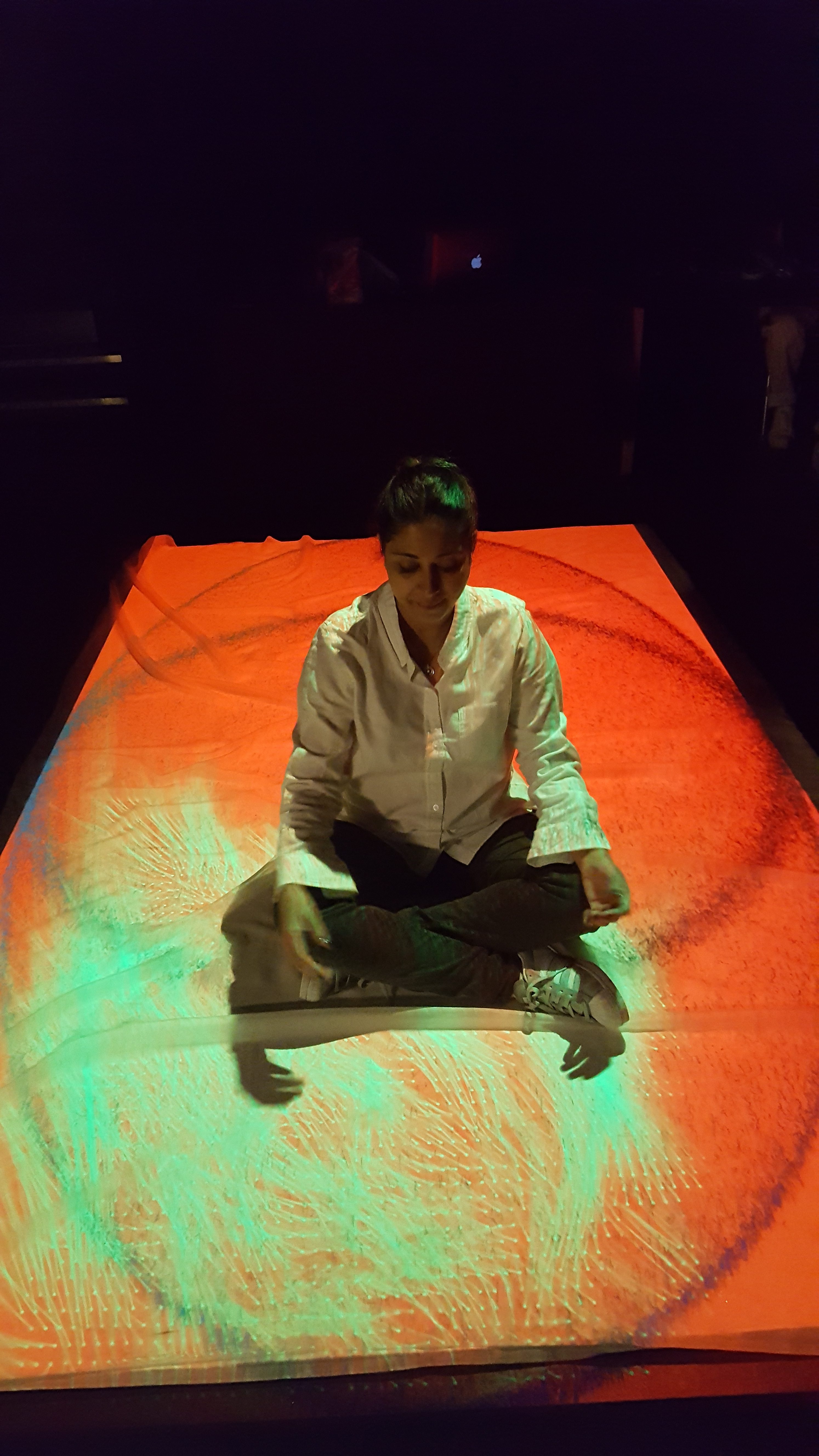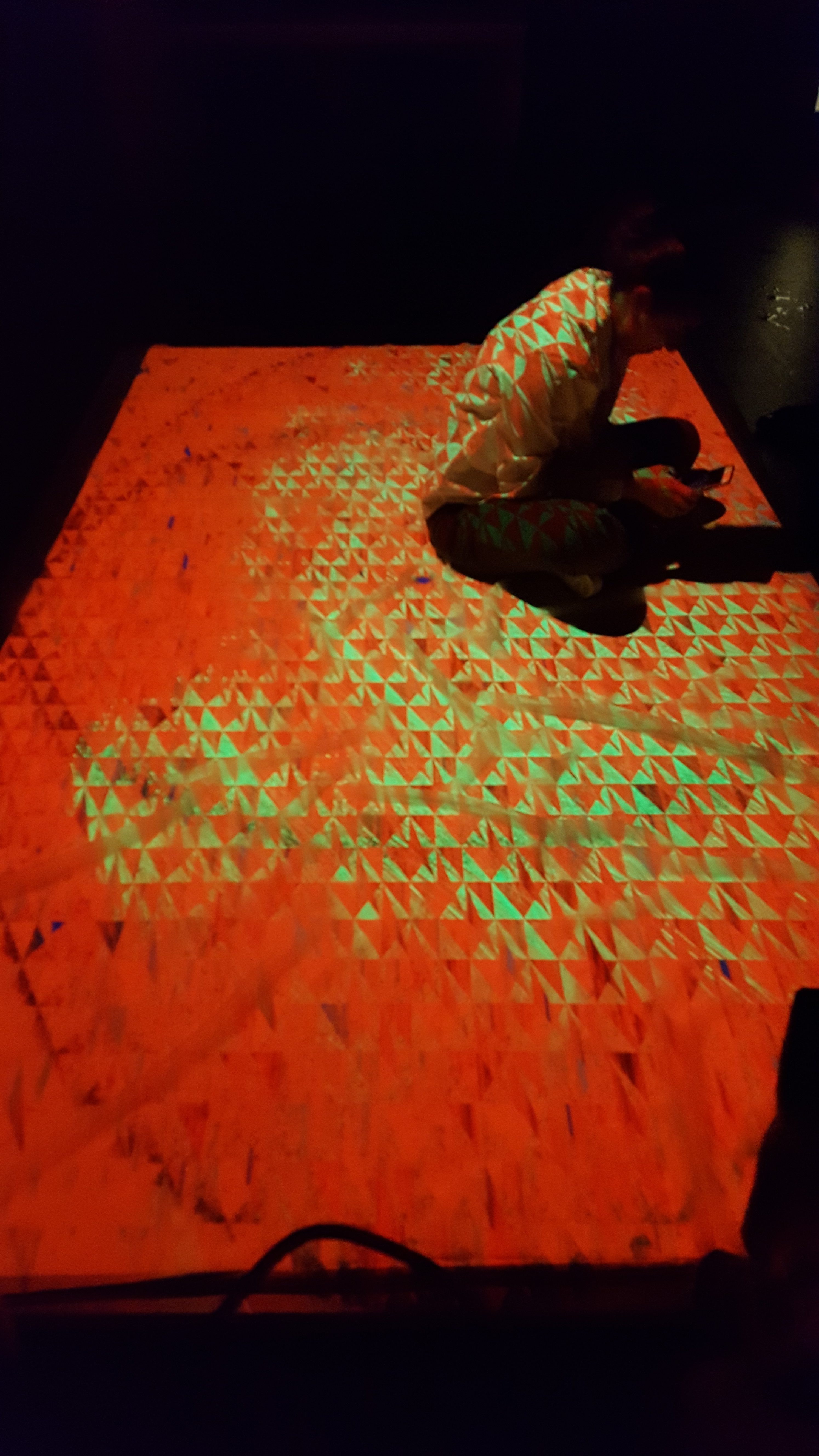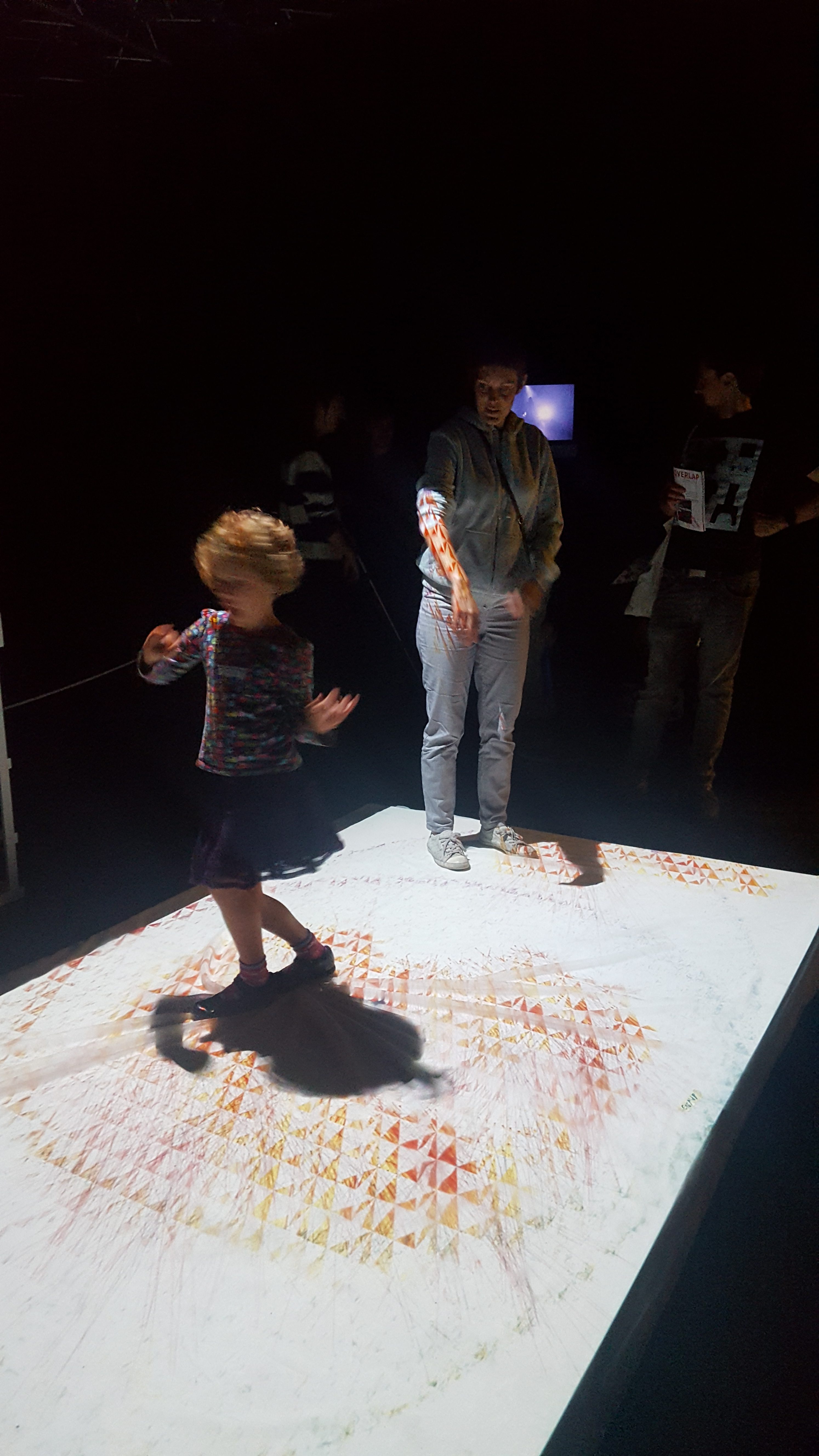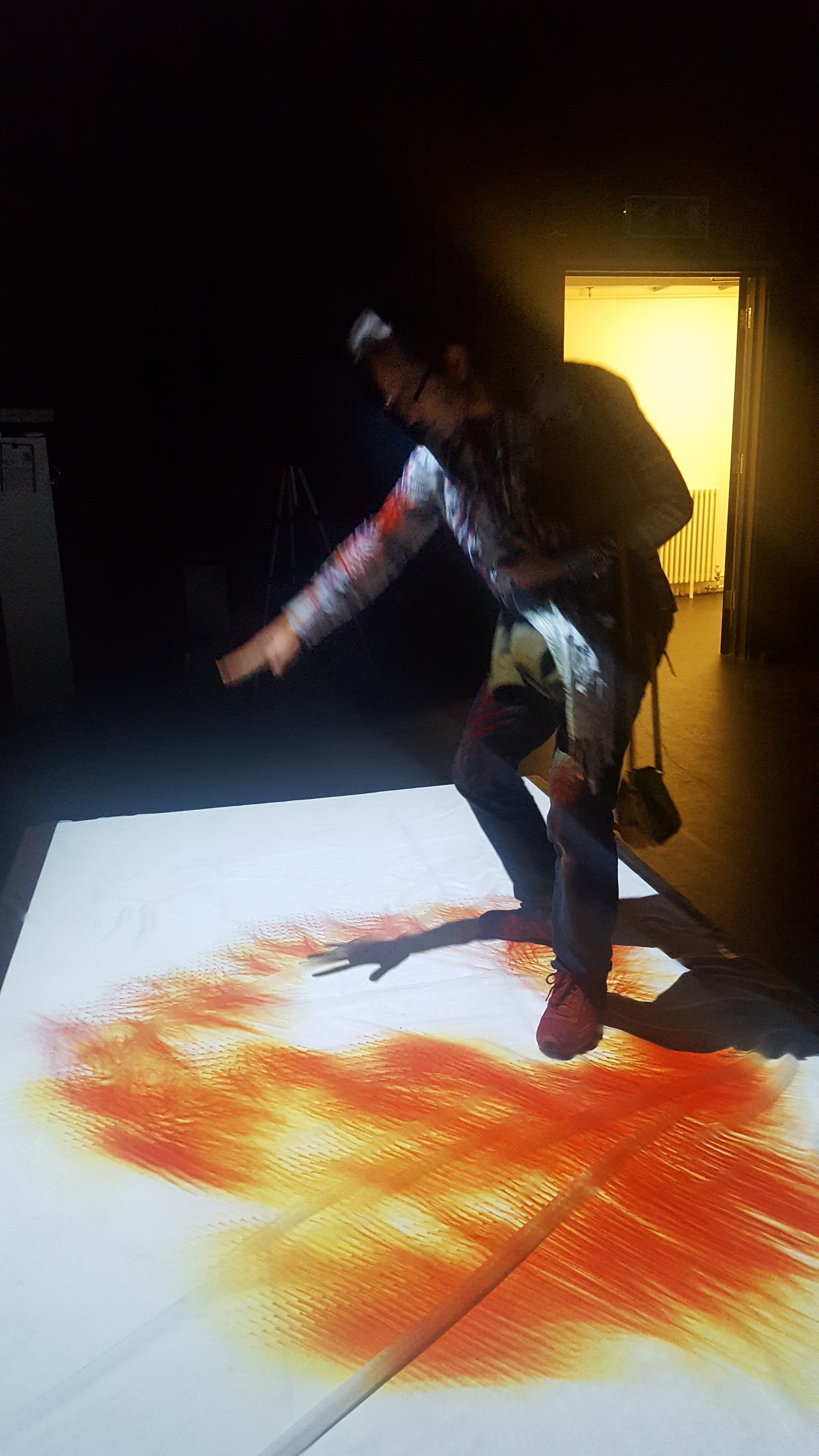entanglement
Entanglement is an Interactive Floor and Projection derived from a project done in second term of Workshops In Creative Coding (here). The term project gave birth to my interest in interactivity.
produced by: Mehrbano Khattak
Introduction
Entanglement is an interactive floor project, which evokes the viewers playful side.
Concept
Read a passage shared by a friend on “Quantum Entanglement”. Where it talks about occurrence of pairs or groups of particles interacting in ways such that the quantum state of each particle cannot be described independently of the others. I researched on the idea of quantum entanglement and it fascinated me. I found that many writers have romanticised with this concept, as Nicholas Sparks in The Notebook, “Dusk … is just an illusion, because the sun is either above the horizon or below it. And that means that day and night are linked in a way that few things are; that can not exist at the same time. How would it feel …to be always together, yet forever apart?” Being a romantic at heart, I feel the being cannot exist without the other. The flower can not grow without a seed, and a seed cannot grow without a flower, yet they can not exist at the same time. The existence of being is a state of intertwine similar to quantum entanglement. Hence, the state of entanglement became a source of inspiration and aspiration in concluding of my final project.
Audience
The project is designed for interaction with all ages.
User Scenario
An interactive floor for viewers to interact with.
Ideation Phase and Background Research
Entanglement is developed in layers first was particle system the main purpose of this layer was to have something playing in the background, while in exhibition we wait for the viewer to enter the room. Then optic flow layer purpose was to engage the viewer in the interactivity and the final phase was a texture layer, this layer purpose was to create diversity while the interaction was taking place. Data is collected from bypassing viewers via camera which was later changed to the usage of Kinect. The Optic Flow visually represent lines and dots the images attained from the Kinect were reading blobs. This output/interaction is displayed on the floor (image).
In the research process, decision of displaying my projection on the floor was inspired by the project “interactive light sculpture, Studio7 | München | April 2016 by mayer+empl”. Dan Shiffman was studied. The perline noise was studied from Trent Brooks. Hidetoshi Shimodaira’s Optic Flow. Jason Stephens and Owen Williams. Memo and Edan Kwan
Technical
Experimental Phase
This project required some experimentations such as for interactivity I started working with Kinect (here). An understanding of particle systems (here) and optical flow (here and here) and also did some experiments with 3D Printing, Arduino Servo Motors and Force Sensor Resistors (here and here). The 3D objects, Arduino Servo Motors and Force Sensor Resistors somehow did not work for the execution of the project, so I quickly redacted the idea. At some point I also experimented with audio, to create sounds as the interaction will occur (music, sound); but somehow that didn’t seem like a good idea; but some viewers when interacting with the project said it would have been interesting to have some sound.
Technical Implementation
This project was developed using Processing 2.2.1 working with this version of the program was a decision made while developing it, the latest version kept crashing and was not working. Libraries used: import processing.video.*; import processing.opengl.*; import org.openkinect.processing.*; import java.util.Iterator; BlendMode, keyPressed events, Kinect and a study of algorithms of predecessors (mentioned in reserach) technical Booklet
The final project execution involved Laptop, Kinect, Projector, the floor for the projection was specially designed with a platform and sheer, to give it a sensitive look.
Design
Entanglement is produced by a minimalist graphic/visual designer as an interactive artwork. Through computation the fragments are arranged together in a way to compliment these other, be able to interwine with each other, compliment and contrast in colors, play of negative and positve spaces.
Future development
While placing a sheer on the platform many people asked me if I was worried about the sheer being white, getting dirty; to which I answered, when working on a path the traces of footsteps become part of the environment. Here I see my project evolving with time and people interacting with it. Sound, Physical Computing and more experimental representations can be included with the current entanglement. The viewers and the engaged audience were mesmerised when the combination of texture and optic flow was played, and then when blend modes were changed taking both the viewers and engaged audience by surprise.
Self Evaluation
Interestingly, coming from a non-coding background I would say entanglement was a very ambitious project. As mentioned before the physical computing component did not work and an early decision was made not to pursue it. Optic Flow worked very well with the audience; specially the combination of optic flow and texture (here). Knowing this I would have carried out with having different versions of the optic flow. Also, I would like to gain more training in modes; that can be activated at certain parameters; which I was unable to do so I used keypressed class instead. This decision in it's self was not a bad one, as I could view and manage the modes accordingly to my audience. The decision of entanglement being interactive was very successful; but for the future I would invest my time and create a more illusion oriented platform. Particles (here) had a very strong visual impact, but its interaction was not well understood by the viewers; it would have been better if it had more interaction rather than being visually pleasing; also I did developed extra particles which made the optic flow a bit slow; and I had to remove the particles, if I found the audience were interested to engage more with the piece. Entanglement was achieved as it was perceived, very few elements changed from convene to its birth.
With thanks to my program and other tutors, I learned a lot in the process of developing and creating this project. Learning being one of my primary goals; I had to challenge myself to learn computational concepts. This project also taught me a great deal about coding and its many nuances. I also discovered and appreciate the perfection in programming and unexpected upshot.
The viewers and the engaged audience were mesmerised when the combination of texture and optic flow was played, and then when blend modes were changed taking both the viewers and engaged audience by surprise.
References
Computer Vision Motion and Optic Flow
FLOW 1 | KINECT PROJECTOR DANCE
Jason Stephens and Owen Williams
mayer+empl architectural space intervention
http://mayerempl.wordpress.com/
All my experiments and codes are found at:



































































